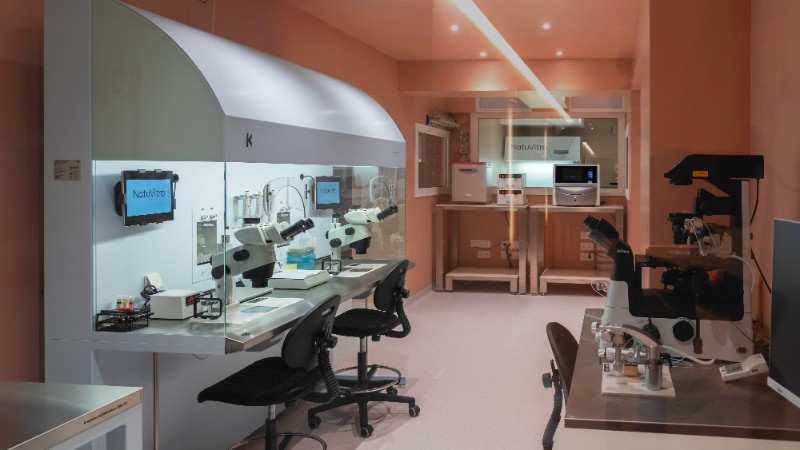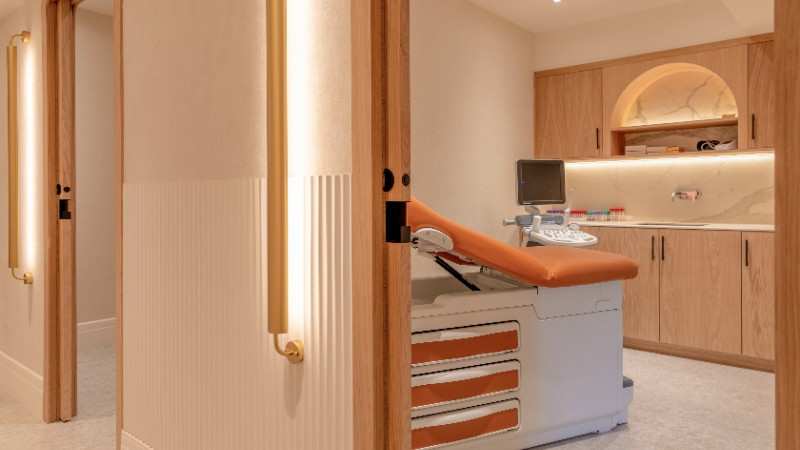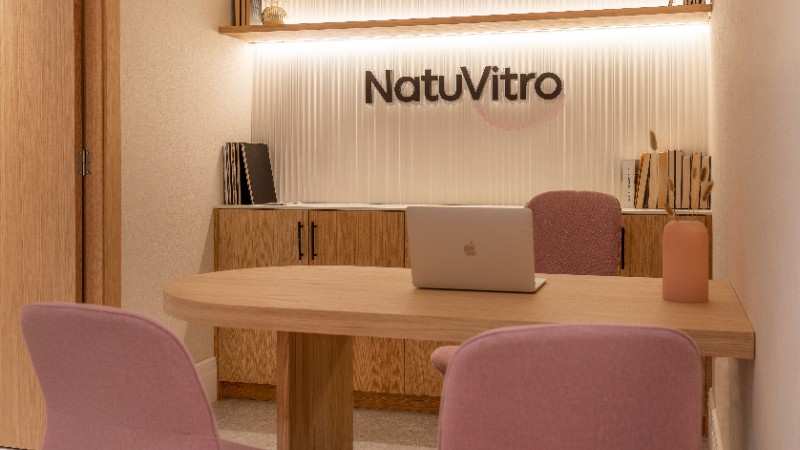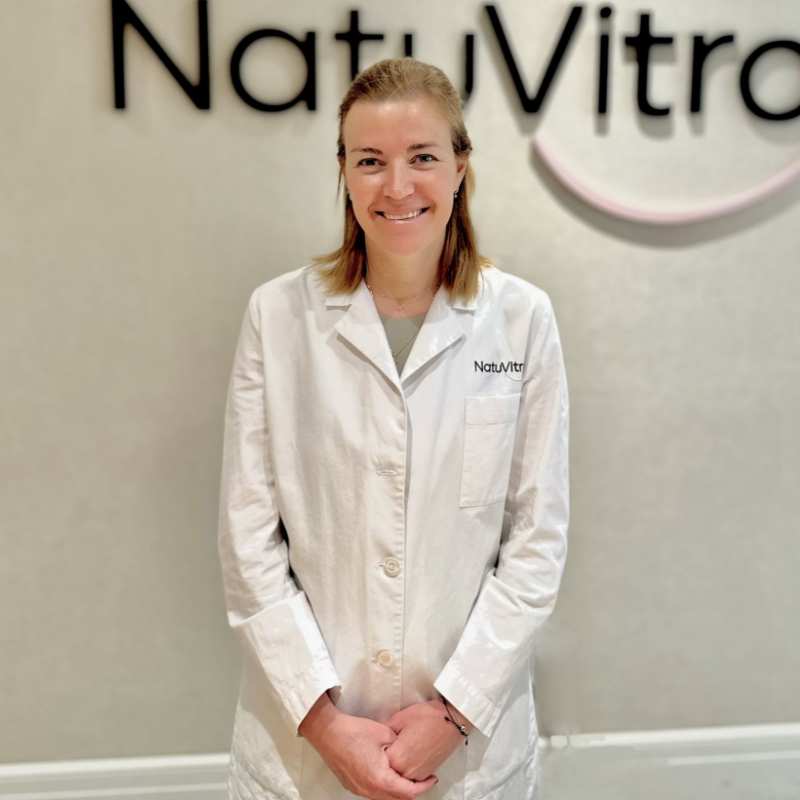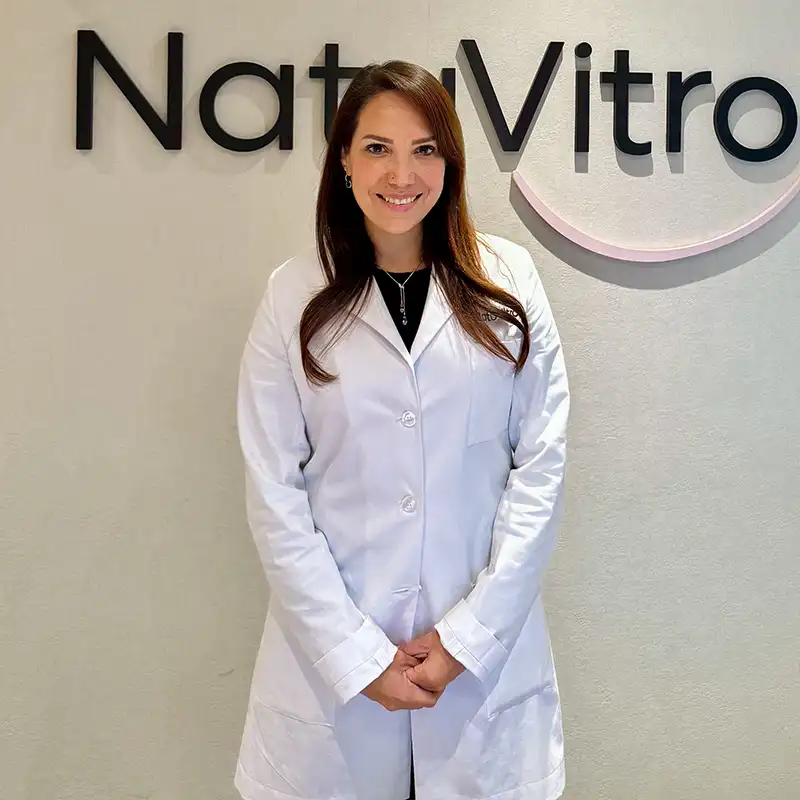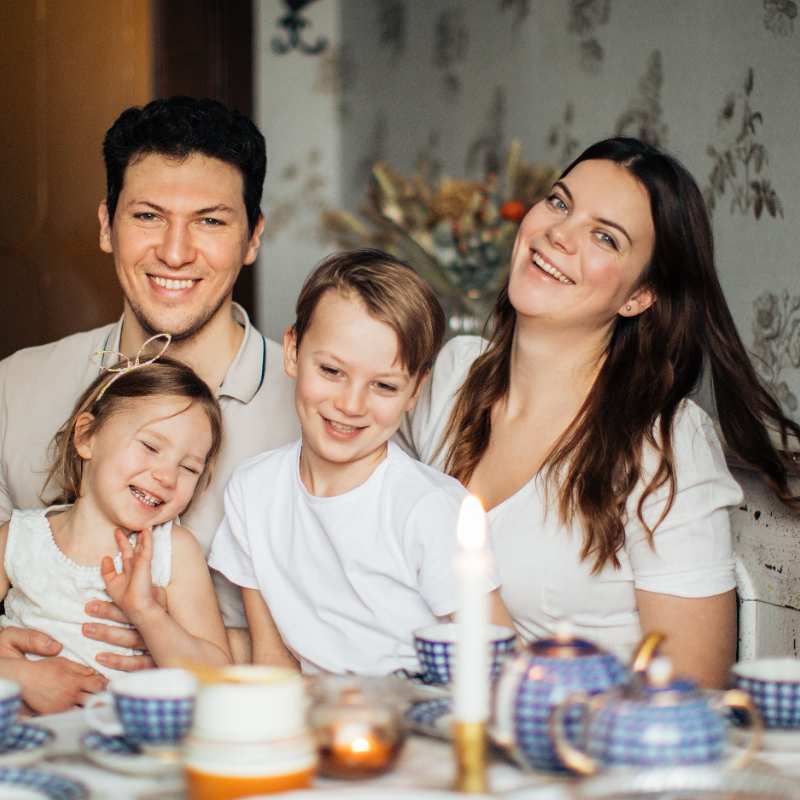
Egg Donation: Who Will the Baby Look Like?
The choice of egg donation represents a specific path to parenthood, raising many questions, including genetics, transmission, and the appearance of the fetus. In this complex process, a key question arises: How do genetic factors, particularly those of the egg donor, contribute to and influence the physical traits of a child born through egg donation?
Egg donation involves the use of eggs from a donor to aid in conception, while the intended couple or father provides their own sperm. This dual genetic contribution lays the foundation for a complex interaction of genes that will define the unique characteristics of the child. While the genes from the egg donor significantly influence certain physical characteristics, the genetic contribution from the intended father is equally important.
Here we explain the genetic complexity of egg donation, highlighting the multiple factors that contribute to the physical traits of a child.
1. The Genetic Footprint: Decoding the Contribution of the Egg Donor
In the realm of egg donation, the genetic contribution of the egg donor has profound impacts on the phenotypic traits of the resulting child. The genetic makeup of the donor transmits specific hereditary characteristics, such as eye and hair color, and possible predispositions to certain health issues. This is why donors undergo specific screenings for numerous hereditary diseases and a rigorous phenotypic selection, all to ensure a genetic inheritance that is as healthy as possible and as close as possible to the recipient.
Studies on transgenerational inheritance (Estimation of the relative contributions of maternal, paternal, and intrauterine genetic factors to birth weight and head circumference of offspring: France Rice, Anita Thapar, j.earlhumdev 2010) suggest that for certain traits, such as head size, both maternal and paternal genes are involved at birth.
While other characteristics such as size are indexed by the mother's intrauterine environment. Therefore, these findings suggest a possible biological interaction between the intrauterine environment and maternal hereditary characteristics.
The hereditary process is under epigenetic control that regulates gene expression and depends on the intrauterine environment. Thus, having a gene does not mean it will always be expressed, as it will require specific conditions to activate it.
Research in reproductive genetics emphasizes the importance of epigenetic factors in modulating the manifestation of hereditary traits, adding an additional layer of complexity to the genetic landscape (Genomic imprinting: the emergence of an epigenetic paradigm: AC Ferguson-Smith, Nature review Genetics 2011).
As studies continue, we better understand the impact of the embryo's intrauterine environment on its development. While the genetic contribution of the egg donor is important, it is evident that processes of genetic activation or lack thereof also influence the characteristics of the fetus.
2. Epigenetic Factors: Beyond Inheritance in Egg Donation
In the realm of egg donation, scientific discourse goes beyond simple genetic inheritance to encompass the complex realm of epigenetic factors. These factors play a fundamental role in modulating gene expression, influencing how inherited genetic material translates into observable traits.
Epigenetics involves changes in DNA methylation and histones that regulate genetic activity without altering the underlying genetic code.
In the context of egg donation, it is essential to understand the role of epigenetics. It not only contributes to the complexity of the hereditary genetic mosaic but also provides a more nuanced perspective on how specific traits may be expressed. The interaction of epigenetic factors contributes to the unique identity of each child born through egg donation by combining the genetic contributions of the egg donor, the intended mother who carries the pregnancy, and the intended father.
3. Dominant and Recessive Alleles: The Role of the Intended Father
In the context of egg donation, the interaction of the dominant and recessive alleles from the two genetic inheritances significantly contributes to the manifestation of observable traits in the child. From a scientific perspective, the inheritance of alleles follows distinct patterns that can be illustrated with examples of specific traits, providing a tangible understanding of genetic expression.
Eye Color:
Dominant allele: brown eyes (B)
Recessive allele: blue eyes (b)
If the egg donor provides a pair of brown eye alleles (BB) and the intended father provides a pair of blue eye alleles (bb), the resulting child will inherit one brown allele and one blue allele (Bb), expressing the dominant brown eye trait.
Hair Texture:
Dominant allele: straight hair (S)
Recessive allele: curly hair(s)
If the egg donor carries a pair of straight hair alleles (SS) and the intended father carries a pair of curly hair alleles (ss), the resulting child will inherit one straight allele and one curly allele (Ss), thus expressing the dominant straight hair trait.
Hair Color:
Dominant allele: brown hair (B)
Recessive allele: blonde hair (b)
If the egg donor carries a pair of brown alleles (BB) and the intended father carries a pair of blonde alleles (bb), the resulting child will inherit one brown allele and one blonde allele (Bb), expressing the dominant trait of brown hair.
Freckles:
Dominant allele: freckles (F)
Recessive allele: no freckles (f)
If the egg donor provides a pair of alleles with freckles (FF) and the intended father provides a pair of alleles without freckles (ff), the resulting child will inherit one freckle allele and the absence of a freckle (Ff), thus expressing the dominant freckle trait.
Tongue Rolling:
Dominant allele: can roll the tongue (R)
Recessive allele: cannot roll the tongue (r)
If the egg donor has a pair of alleles for tongue rolling (RR) and the intended father has a pair of alleles for not rolling the tongue (rr), the resulting child will inherit one allele for rolling the tongue and one for not rolling the tongue (Rr), thus expressing the dominant trait of tongue-rolling ability.
These examples illustrate the diversity of genetic traits influenced by the interaction of the dominant and recessive alleles of both the genetic mother and father. The characteristics of the resulting child are determined by the combination of alleles inherited from both the egg donor and the intended father, reflecting a unique genetic identity.
4. Genetic Counseling and Informed Decision-Making
One of the primary goals of genetic counseling is to ensure that prospective parents have a realistic understanding of the genetic and epigenetic complexities inherent in the egg donation process.
This involves discussing potential risks (genetically transmissible diseases), uncertainties, and variations in gene expression, promoting an open and informed dialogue between healthcare professionals and prospective parents. This collaborative and science-based approach enables prospective parents to navigate the complex genetic landscape of egg donation, contributing to a well-informed and emotionally supported journey towards parenthood.
Conclusion:
In conclusion, egg donation is a complex procedure that raises many questions, and only attentive and scientific support can help to understand the full complexity of the genetic and epigenetic heritage transmission of the fetus.
At NatuVitro, our commitment to providing personalized and attentive care allows the dream of parenthood to be accompanied by informed consent for this procedure.
The focus is not only on inherited traits but on the promise that each child born on this journey carries a part of the future parents.
Our experts are ready to examine your case history, clarify your choices, and address every question you have.
Don't wait to make informed decisions – your personalized guidance awaits!
- Spain (España)+34
- France (La France)+33
- Italy (Italia)+39
- United Kingdom+44
- United States+1
- Belgium (België)+32
- Switzerland (Schweiz/Suisse)+41
- Germany (Deutschland)+49
- Netherlands (Nederland)+31
- Afghanistan (افغانستان)+93
- Albania (Shqipëri)+355
- Algeria (الجزائر)+213
- American Samoa+1
- Andorra+376
- Angola+244
- Anguilla+1
- Antigua and Barbuda+1
- Argentina+54
- Armenia (Հայաստան)+374
- Aruba+297
- Ascension Island+247
- Australia+61
- Austria (Österreich)+43
- Azerbaijan (Azərbaycan)+994
- Bahamas+1
- Bahrain (البحرين)+973
- Bangladesh (বাংলাদেশ)+880
- Barbados+1
- Belarus (Беларусь)+375
- Belize+501
- Benin (Bénin)+229
- Bermuda+1
- Bhutan (འབྲུག)+975
- Bolivia+591
- Bosnia and Herzegovina (Босна и Херцеговина)+387
- Botswana+267
- Brazil (Brasil)+55
- British Indian Ocean Territory+246
- British Virgin Islands+1
- Brunei+673
- Bulgaria (България)+359
- Burkina Faso+226
- Burundi (Uburundi)+257
- Cambodia (កម្ពុជា)+855
- Cameroon (Cameroun)+237
- Canada+1
- Cape Verde (Kabu Verdi)+238
- Caribbean Netherlands+599
- Cayman Islands+1
- Central African Republic (République centrafricaine)+236
- Chad (Tchad)+235
- Chile+56
- China (中国)+86
- Christmas Island+61
- Cocos (Keeling) Islands+61
- Colombia+57
- Comoros (جزر القمر)+269
- Congo (DRC) (Jamhuri ya Kidemokrasia ya Kongo)+243
- Congo (Republic) (Congo-Brazzaville)+242
- Cook Islands+682
- Costa Rica+506
- Côte d’Ivoire+225
- Croatia (Hrvatska)+385
- Cuba+53
- Curaçao+599
- Cyprus (Κύπρος)+357
- Czech Republic (Česká republika)+420
- Denmark (Danmark)+45
- Djibouti+253
- Dominica+1
- Dominican Republic (República Dominicana)+1
- Ecuador+593
- Egypt (مصر)+20
- El Salvador+503
- Equatorial Guinea (Guinea Ecuatorial)+240
- Eritrea+291
- Estonia (Eesti)+372
- Eswatini+268
- Ethiopia+251
- Falkland Islands (Islas Malvinas)+500
- Faroe Islands (Føroyar)+298
- Fiji+679
- Finland (Suomi)+358
- French Guiana (Guyane française)+594
- French Polynesia (Polynésie française)+689
- Gabon+241
- Gambia+220
- Georgia (საქართველო)+995
- Ghana (Gaana)+233
- Gibraltar+350
- Greece (Ελλάδα)+30
- Greenland (Kalaallit Nunaat)+299
- Grenada+1
- Guadeloupe+590
- Guam+1
- Guatemala+502
- Guernsey+44
- Guinea (Guinée)+224
- Guinea-Bissau (Guiné Bissau)+245
- Guyana+592
- Haiti+509
- Honduras+504
- Hong Kong (香港)+852
- Hungary (Magyarország)+36
- Iceland (Ísland)+354
- India (भारत)+91
- Indonesia+62
- Iran (ایران)+98
- Iraq (العراق)+964
- Ireland+353
- Isle of Man+44
- Israel (ישראל)+972
- Italy (Italia)+39
- Jamaica+1
- Japan (日本)+81
- Jersey+44
- Jordan (الأردن)+962
- Kazakhstan (Казахстан)+7
- Kenya+254
- Kiribati+686
- Kosovo+383
- Kuwait (الكويت)+965
- Kyrgyzstan (Кыргызстан)+996
- Laos (ລາວ)+856
- Latvia (Latvija)+371
- Lebanon (لبنان)+961
- Lesotho+266
- Liberia+231
- Libya (ليبيا)+218
- Liechtenstein+423
- Lithuania (Lietuva)+370
- Luxembourg+352
- Macau (澳門)+853
- North Macedonia (Македонија)+389
- Madagascar (Madagasikara)+261
- Malawi+265
- Malaysia+60
- Maldives+960
- Mali+223
- Malta+356
- Marshall Islands+692
- Martinique+596
- Mauritania (موريتانيا)+222
- Mauritius (Moris)+230
- Mayotte+262
- Mexico (México)+52
- Micronesia+691
- Moldova (Republica Moldova)+373
- Monaco+377
- Mongolia (Монгол)+976
- Montenegro (Crna Gora)+382
- Montserrat+1
- Morocco (المغرب)+212
- Mozambique (Moçambique)+258
- Myanmar (Burma) (မြန်မာ)+95
- Namibia (Namibië)+264
- Nauru+674
- Nepal (नेपाल)+977
- New Caledonia (Nouvelle-Calédonie)+687
- New Zealand+64
- Nicaragua+505
- Niger (Nijar)+227
- Nigeria+234
- Niue+683
- Norfolk Island+672
- North Korea (조선 민주주의 인민 공화국)+850
- Northern Mariana Islands+1
- Norway (Norge)+47
- Oman (عُمان)+968
- Pakistan (پاکستان)+92
- Palau+680
- Palestine (فلسطين)+970
- Panama (Panamá)+507
- Papua New Guinea+675
- Paraguay+595
- Peru (Perú)+51
- Philippines+63
- Poland (Polska)+48
- Portugal+351
- Puerto Rico+1
- Qatar (قطر)+974
- Réunion (La Réunion)+262
- Romania (România)+40
- Russia (Россия)+7
- Rwanda+250
- Saint Barthélemy+590
- Saint Helena+290
- Saint Kitts and Nevis+1
- Saint Lucia+1
- Saint Martin (Saint-Martin (partie française))+590
- Saint Pierre and Miquelon (Saint-Pierre-et-Miquelon)+508
- Saint Vincent and the Grenadines+1
- Samoa+685
- San Marino+378
- São Tomé and Príncipe (São Tomé e Príncipe)+239
- Saudi Arabia (المملكة العربية السعودية)+966
- Senegal (Sénégal)+221
- Serbia (Србија)+381
- Seychelles+248
- Sierra Leone+232
- Singapore+65
- Sint Maarten+1
- Slovakia (Slovensko)+421
- Slovenia (Slovenija)+386
- Solomon Islands+677
- Somalia (Soomaaliya)+252
- South Africa+27
- South Korea (대한민국)+82
- South Sudan (جنوب السودان)+211
- Spain (España)+34
- Sri Lanka (ශ්රී ලංකාව)+94
- Sudan (السودان)+249
- Suriname+597
- Svalbard and Jan Mayen+47
- Sweden (Sverige)+46
- Syria (سوريا)+963
- Taiwan (台灣)+886
- Tajikistan+992
- Tanzania+255
- Thailand (ไทย)+66
- Timor-Leste+670
- Togo+228
- Tokelau+690
- Tonga+676
- Trinidad and Tobago+1
- Tunisia (تونس)+216
- Turkey (Türkiye)+90
- Turkmenistan+993
- Turks and Caicos Islands+1
- Tuvalu+688
- U.S. Virgin Islands+1
- Uganda+256
- Ukraine (Україна)+380
- United Arab Emirates (الإمارات العربية المتحدة)+971
- Uruguay+598
- Uzbekistan (Oʻzbekiston)+998
- Vanuatu+678
- Vatican City (Città del Vaticano)+39
- Venezuela+58
- Vietnam (Việt Nam)+84
- Wallis and Futuna (Wallis-et-Futuna)+681
- Western Sahara (الصحراء الغربية)+212
- Yemen (اليمن)+967
- Zambia+260
- Zimbabwe+263
- Åland Islands+358
Visit our clinic
Location
Call us now
Leave a message

